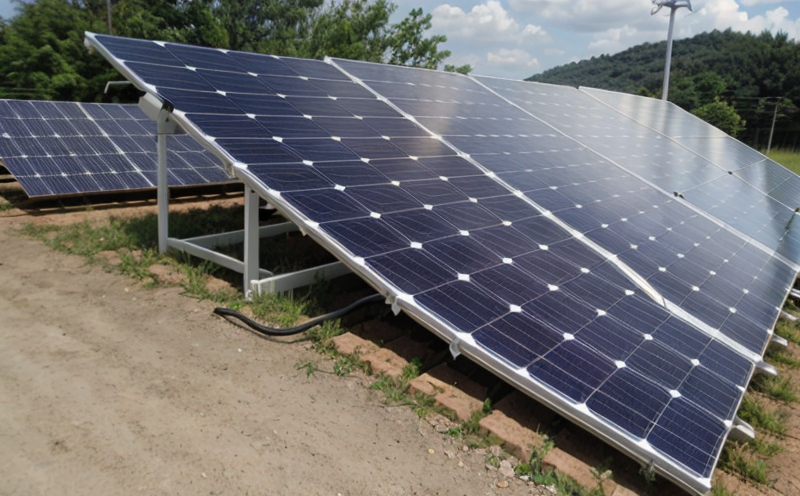IEC 61215-2 Mechanical Load Sequence Testing
The IEC 61215-2 standard is a crucial document that outlines the requirements for mechanical load sequence testing of solar panels and photovoltaic (PV) modules. This test ensures that PV modules are capable of enduring harsh environmental conditions, such as snow loads and wind-induced stresses, which can significantly impact their performance and longevity.
During this process, the module is subjected to a series of loading cycles designed to simulate real-world stressors. Each cycle consists of applying a load for a specific duration followed by unloading, typically in a controlled environment where temperature variations are also simulated. This testing regimen helps manufacturers ensure that their products will perform reliably under diverse and challenging conditions.
The primary goal of this test is to verify the structural integrity and durability of PV modules against mechanical loads. By subjecting the module to these sequences, engineers can identify potential weaknesses in design or manufacturing processes early on, allowing for necessary improvements before mass production begins.
For quality managers and compliance officers, understanding the nuances of IEC 61215-2 is essential as it forms part of broader sustainability initiatives within the energy sector. Ensuring adherence to such standards not only enhances product reliability but also contributes positively towards meeting international environmental goals set forth by organizations like the United Nations Framework Convention on Climate Change (UNFCCC).
R&D engineers play a pivotal role in developing innovative solutions that meet these stringent requirements while pushing technological boundaries. The mechanical load sequence test allows them to refine designs, optimize materials usage, and enhance overall efficiency without compromising safety standards.
Compliance officers must stay abreast of evolving regulations related to renewable energy technologies. Keeping up-to-date with updates on IEC 61215-2 ensures that companies remain compliant with global market demands and maintain their competitive edge in both domestic and international markets.
Finally, procurement professionals can leverage knowledge about this testing method when sourcing components for manufacturing processes. They need to ensure suppliers deliver materials capable of passing rigorous mechanical load sequence tests, thereby contributing towards creating high-quality end products.
Applied Standards
| Standard | Description |
|---|---|
| IEC 61215-2:2017 | This edition includes the following changes as compared to the previous edition: |
| - Clarification of test procedures and conditions. | - Introduction of new tests specific to different types of PV modules. |
| - Enhanced emphasis on safety aspects related to mechanical loads. | - Updated guidelines for reporting results from these tests. |
Customer Impact and Satisfaction
- Enhanced confidence in product quality leading to increased customer satisfaction.
- Improved reputation among stakeholders, including investors and regulatory bodies.
- Potential for higher market share due to superior performance guarantees provided by compliant products.
- Better alignment with international standards fostering easier trade across borders.
- Increased trust in brands committed to sustainability practices endorsed through rigorous testing procedures like IEC 61215-2.
Competitive Advantage and Market Impact
Adherence to the IEC 61215-2 standard provides significant competitive advantages for businesses operating in the renewable energy sector. Companies that successfully pass these tests demonstrate their commitment to producing reliable, long-lasting PV modules capable of enduring various environmental stresses.
This commitment translates into enhanced brand reputation and customer trust, ultimately translating into higher sales figures and greater market share. Additionally, compliance with international standards can facilitate smoother entry into new markets, particularly those with stringent regulatory requirements regarding renewable energy technologies.
The mechanical load sequence test plays a vital role in ensuring the reliability of photovoltaic modules, thereby contributing to the overall success and sustainability goals of organizations involved in this industry.





